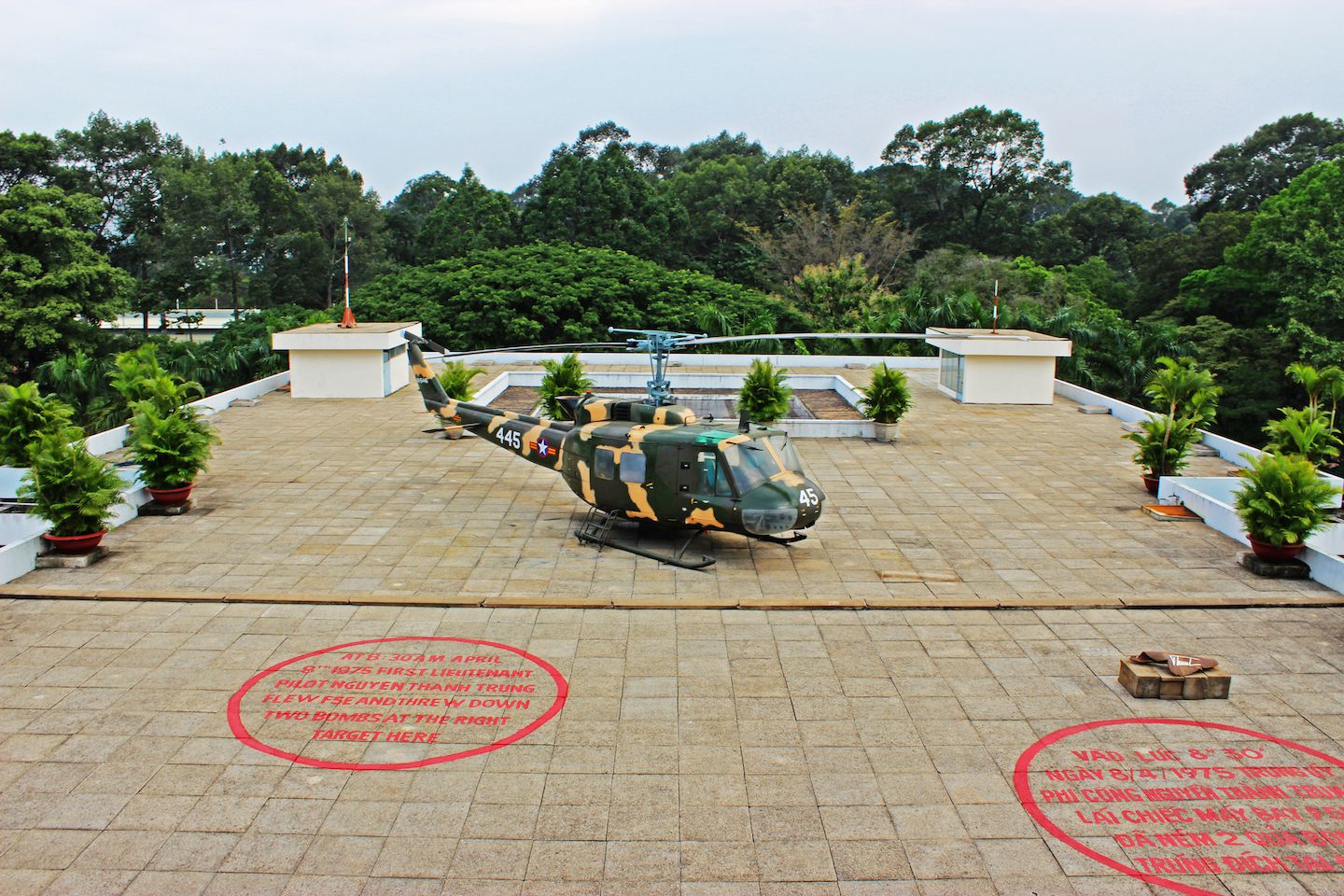Just a few decades ago, during the Vietnam War, Saigon (now Ho Chi Minh City) was the stage of major battles and political disputes. Today, it is a city of contrasts, where war wounds can still be seen in the middle of the new concrete jungle that has since risen.
Independence Palace
The place where the Fall of Saigon took place, the Independence Palace used to be the residence and workplace of the President of South Vietnam during the war period. The palace was bombed by two pilots from the Vietnam Air Force who rebelled against their own army. Although the President escaped alive, the palace could not be recovered, forcing it to be demolished and rebuilt. The newly rebuilt Independence Palace that can be seen presently was bombed once again later on, but this time with no significant damage.

We walked through several nicely decorated meeting rooms and conference halls. Although they were nice, none of them really stood out. We both thought all the room decor looked more Chinese than Vietnamese.

Up on the roof of the palace, a helicopter used for emergency evacuation of the President and other officials is always on site. Signs on the ground mark the exact locations where the palace was bombed the second time.

One of my favourite parts was the bunker underneath the palace. It was a rather claustrophobic space with several command and intelligence rooms, communication devices and war maps. Walking through the bunker really gave me a sense of what it would have been like to hide here when the palace was under attack.

Notre Dame Cathedral
Built by the French colonialists in 1880, the Notre Dame Cathedral in Saigon resembles the one found in Paris, with two main square towers and a central stained glass window. Although not as large or elegant as its Parisian counterpart, it surely added some contrast to all the Asian temples and pagodas around.

In 2005, the Notre Dame Cathedral of Saigon was also the site of a controversy when people reported that the statue of Virgin Mary in front of the church had shed tears. Thousands of people crowded in front of the church for days, looking for miracles. It was later confirmed to have been a hoax.
Saigon Post Office
The French-architectured post office in the heart of the city right across the street from Notre Dame Cathedral attracts tourists for its unique and beautiful design. Its wide corridors and arches really gave it a European look, while the decoration onsite added some Asian-style.

War Remnants Museum
Probably my favourite attraction in Saigon, the War Remnants Museum was similar to the one in Hanoi. The museum had boats, tanks and aircrafts by the main gate and extending all around the building. The vehicles in exhibition were mostly captured from the Americans and were still in good condition.

Inside the museum were more galleries of weapons, this time from small guns and assault rifles to rocket launchers and bombs. There were also several panels showing the casualties and damages caused during the Vietnam War. It was impressive to see how, for example, there were three times more bombs dropped during the Vietnam War than during World War II.

There was also a gallery showing the victims of Agent Orange. It was shocking, both because of the amount of damage the use of this chemical caused, but also because of how realistic the gallery itself looked. From pictures of people who suffer the side effects of Agent Orange to a deformed stillborn fetus, the whole gallery was brutal and painful to look at. Many people still suffer today from the long-lasting effects of the highly toxic dioxin.

One Vietnamese kid wrote a very touching letter as a victim of Agent Orange to President Obama asking for help. The whole thing really makes you reflect on how stupid humans can be sometimes and the awful, inhumane things that we have done to fellow humans.
Saigon, or Ho Chi Minh City, despite its disputes in the past, is now Vietnam’s most prosperous city. A large urban area with wide streets and modern architecture, it was by far the most Americanized place in Vietnam. We personally enjoyed the old charm of Hanoi more, but it’s easy to see how Saigon would be a top destination for many tourists. From the old colonial buildings to the remnants of a war-filled history to the bustling city center, Saigon combined the past and present in a way that only Vietnam could.

